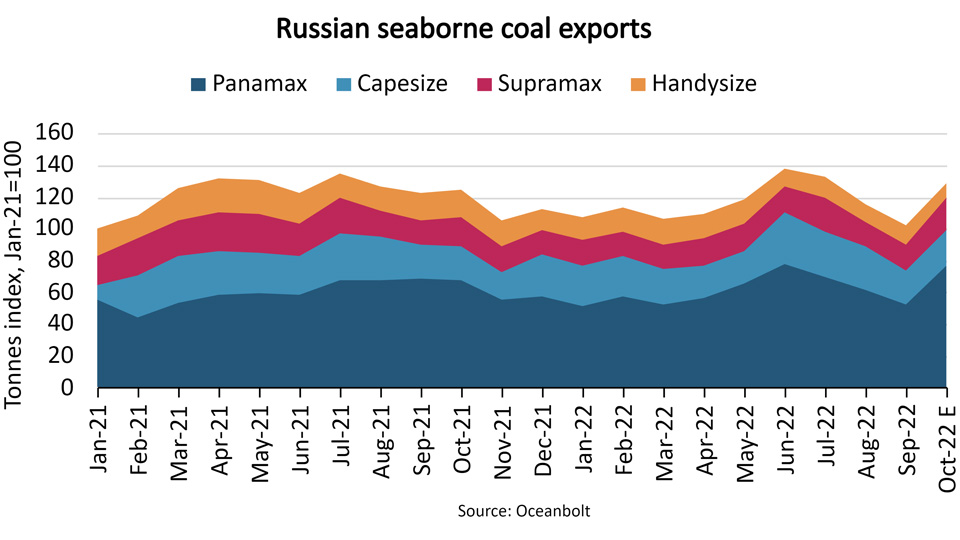As a part of European Union sanctions against Russia, the block banned coal imports from Russia starting 10 August. About two months have passed and Russia has struggled to redirect its coal exports, with export volumes down 7.0% y/y in this period and down 5.0% year to date.
Despite the drop in volumes, tonne mile demand has seen an increase by almost 30% in the last two and a half months . Since the coal sanctions were announced by the EU in April, a verage haul for Russian coal exports have risen by nearly 50% , or around 1, 2 50 miles.

So far, capesizes have benefited the most from the ban, largely due to India’s increased interest in discounted Russian coal. India’s government mandated an increase in coal imports over the summer, due to a surge in energy demand and low coal inventories. This resulted in a boost to tonne miles as capesizes laden with Russian coal from European ports sailed around Africa.
As import demand from India normalises, it is unclear whether the country will continue to buy Russian coal shipped from primarily Black Sea, Baltic and Arctic ports.
So far in 2022, China remains the largest buyer of Russian coal which has accounted for 22.6% of total Chinese coal imports. Even though Chinese coal import volumes dropped 25.7% so far this year, imports from Russia grew 3.5%, likely due to discounted prices.
In the coming months, panamax and supramax ships handling Russian coal should continue to benefit from Chinese demand. However, the country’s ambitious coal mining target and increasing investments in renewable energy could cool the appetite for coal imports. In the first eight months, coal mining increased 13.8%, while electricity production from renewables rose 16.7%.
Source: BIMCO
The opinions expressed herein are the author's and not necessarily those of The Xinde Marine News.
Please Contact Us at:
media@xindemarine.com


 Ningbo Containerized Freight Index Weekly Commentar
Ningbo Containerized Freight Index Weekly Commentar  Ningbo Containerized Freight Index Weekly Commentar
Ningbo Containerized Freight Index Weekly Commentar  Ningbo Containerized Freight Index Weekly Commentar
Ningbo Containerized Freight Index Weekly Commentar  BIMCO Shipping Number of the Week: Bulker newbuildi
BIMCO Shipping Number of the Week: Bulker newbuildi  Ningbo Containerized Freight Index Weekly Commentar
Ningbo Containerized Freight Index Weekly Commentar  Ningbo Containerized Freight Index Weekly Commentar
Ningbo Containerized Freight Index Weekly Commentar